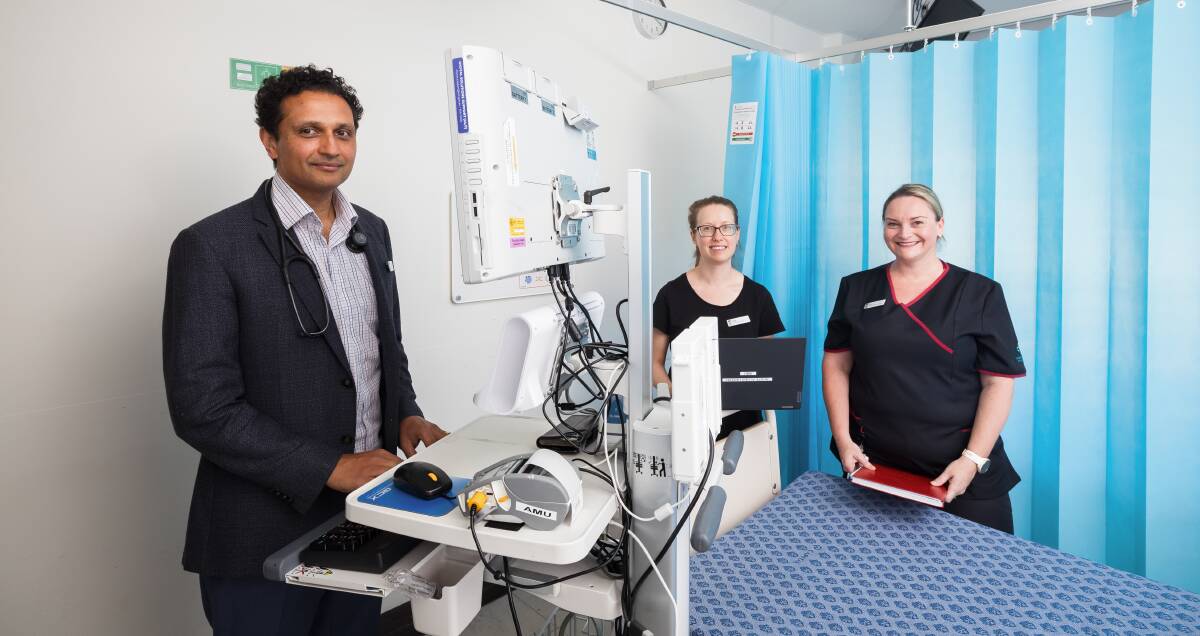
A unit designed to ease pressures on the emergency department at Canberra Hospital has been expanded and early signs have suggested it has helped to reduce waiting times, a lead doctor has said.
The hospital's acute medical unit was recently expanded from 12 beds to 24 beds.
Patients from the emergency department who need acute care can be admitted to the unit where a team is able to assess the treatment or care needed.
Canberra Health Services clinical director for medicine Ashwin Swaminathan said the unit was based on an early intervention model which was aimed at pulling patients away from the emergency department.
"We pull them from the emergency department early once they have been flagged for needing admission, our senior doctors see them as well as pharmacists and allied health and they get a comprehensive nursing assessment," Dr Swaminathan said.
"We make a plan as to how the admission will go and what we're seeing is a well coordinated and planned admission just sets up the whole admission well."
The maximum length of stay in the unit is 48 hours. Dr Swaminathan said about half the patients are discharged from the unit and the other half are admitted into a specialist ward.
People aged over 16 can be admitted to the unit and it is generally for people presenting with a medical condition who need hospitalisation and have symptoms such as low oxygen levels, low blood pressure, fever or confusion.
The ACT's emergency department waiting times consistently rank as the nation's worst.
The latest report on waiting times from ACT Health show that only 39.5 per cent of patients who presented to Canberra Hospital's emergency department were seen on time.
The acute medical unit started in December 2021 and it had 12 beds. The increase to 24 beds happened just over two weeks ago. Unlike certain wards at Canberra Hospital it is staffed outside of working hours.
"So your care on a Saturday, if you come in, it's going to be the same as if you came in on a Tuesday morning," Dr Swaminathan said.
Dr Swaminathan said during that time early signs had suggested the unit was contributing to decreasing waiting times but stressed it was only early days and further evaluation and modelling was needed to fully assess if this had happened.
"We've only been going for two weeks but the early signs are that we are making a dent into ED wait times for inpatient beds so patients are waiting less to get into an inpatient bed than they were [before the unit]," he said.
Authorities determined the unit would have 24 beds based on modelling. Dr Swaminathan said this could increased in the future but at this stage 24 beds was deemed to be sufficient.
The acute medical unit modelled has been used elsewhere, including in other parts of Australia.
A 2022 review commissioned by the Australasian College for Emergency Medicine found the unit helped to decrease the number of patients waiting in emergency departments but the units needed to be adequately staffed and "not used as holding wards".
We've made it a whole lot easier for you to have your say. Our new comment platform requires only one log-in to access articles and to join the discussion on The Canberra Times website. Find out how to register so you can enjoy civil, friendly and engaging discussions. See our moderation policy here.







